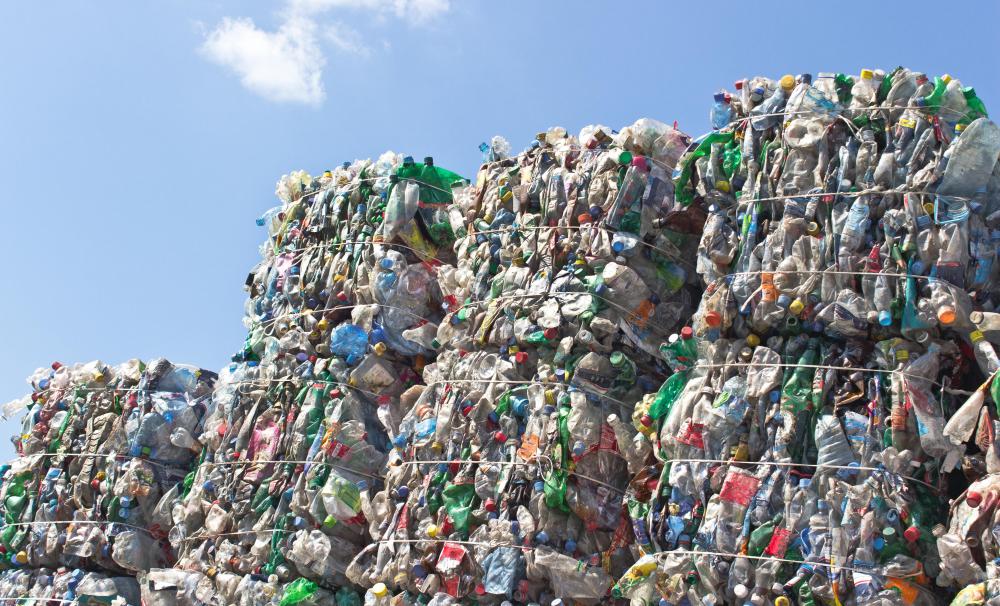At AllThingsNature, we're committed to delivering accurate, trustworthy information. Our expert-authored content is rigorously fact-checked and sourced from credible authorities. Discover how we uphold the highest standards in providing you with reliable knowledge.
What Are the Different Types of Resource Conservation Technology?
Resource conservation technology has been created to help people use natural resources more efficiently. There are many different types of technologies used in the conservation of various resources. Some of these technologies, such as recycling centers, are able to help conserve on a large scale while others, such as aerating water faucets, help individuals conserve a little at a time. Though there are many different resources that need to be conserved, three of the main ones are water, fuel, and waste.
Though water is an abundant resource on the planet, fresh water is not. In order to save water, conservation technology has been created to help collect more water and to better recycle the water that is already in use. Catchment systems may be used on homes or other buildings to collect rain water as it falls onto the roofs of these buildings. Gray water systems may be used to collect water that has been used in indoors so that it can be treated and then used to water plants. A variety of other technologies, such as aerators on faucet heads, and more efficient washing machines can also be used to conserve water.

In terms of conserving fossil fuels, resource conservation technology is usually focused on making technologies that use fuel more efficient so that less is needed in order to perform the same amount of work. Cars with high miles per gallon (km/L) ratios or those that use hybrid engine systems are an example of this kind of technology. Small devices, such as room monitors that turn off the lights when a room is unoccupied, can help individuals use less electricity in their homes and can also help conserve fossil fuels since much of the energy used to power homes is derived from these sources. Resource conservation technology is also used in the creating of new buildings that are better insulated and thus more efficient than other buildings.

Machines that recycle plastic, glass, paper, metal, and other materials are another type of conservation technology. Creating any of these products from scratch requires raw materials and energy. When these items are recycled, less energy is needed to go out and collect the raw materials. The need for landfill area is also reduced through the use of recycling technologies. These technologies are a big part of resource conservation technology because they conserve many resources at once.
Frequently Asked Questions
What is resource conservation technology?

Resource conservation technology encompasses a broad range of tools, strategies, and practices designed to manage natural resources sustainably. This includes innovations in water purification, energy-efficient appliances, renewable energy systems, and sustainable agriculture practices. The goal is to minimize environmental impact while meeting human needs.
How does renewable energy contribute to resource conservation?
Renewable energy technologies, such as solar panels and wind turbines, harness natural processes to generate power. By relying on inexhaustible sources like the sun and wind, these technologies reduce dependence on finite fossil fuels and decrease greenhouse gas emissions. According to the International Energy Agency, renewables are set to account for almost 95% of the increase in global power capacity through 2026.
What role does water conservation technology play in resource management?
Water conservation technology is crucial for managing this vital resource, especially in areas facing water scarcity. Technologies like low-flow fixtures, efficient irrigation systems, and wastewater treatment processes reduce water consumption and pollution. Smart water management systems can lead to significant savings; for instance, drip irrigation can increase efficiency by up to 40% compared to traditional methods.
Can technology improve soil conservation?
Yes, technology plays a significant role in soil conservation. Techniques like precision farming, which uses GPS and data analytics, allow for more accurate planting, fertilizing, and watering, reducing soil erosion and degradation. Cover cropping and no-till farming are other practices supported by technology that help maintain soil health and fertility.
What is the impact of energy-efficient appliances on resource conservation?
Energy-efficient appliances have a substantial impact on resource conservation by reducing electricity consumption and greenhouse gas emissions. For example, ENERGY STAR certified appliances can save up to 30% on electricity bills and contribute to significant reductions in national energy consumption. This not only conserves resources but also translates into economic savings for consumers.
Are there technologies that help with wildlife conservation?
Indeed, there are numerous technologies aiding wildlife conservation. Tracking devices and drones monitor animal movements and habitat use, while genetic analysis helps in understanding species diversity and population dynamics. Anti-poaching technologies, like thermal imaging cameras, also play a critical role in protecting endangered species from illegal hunting activities.
AS FEATURED ON:
AS FEATURED ON:













Discuss this Article
Post your comments